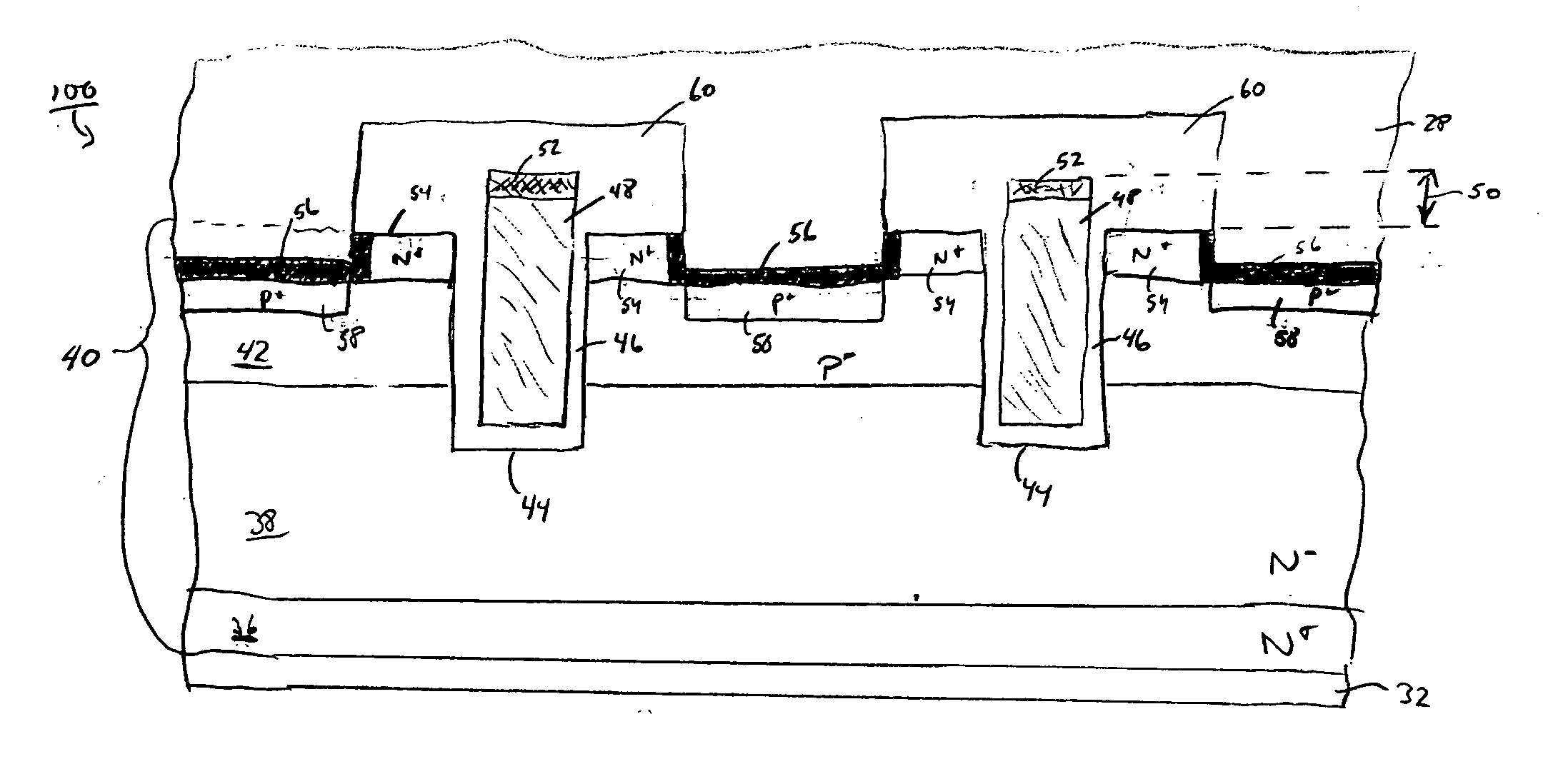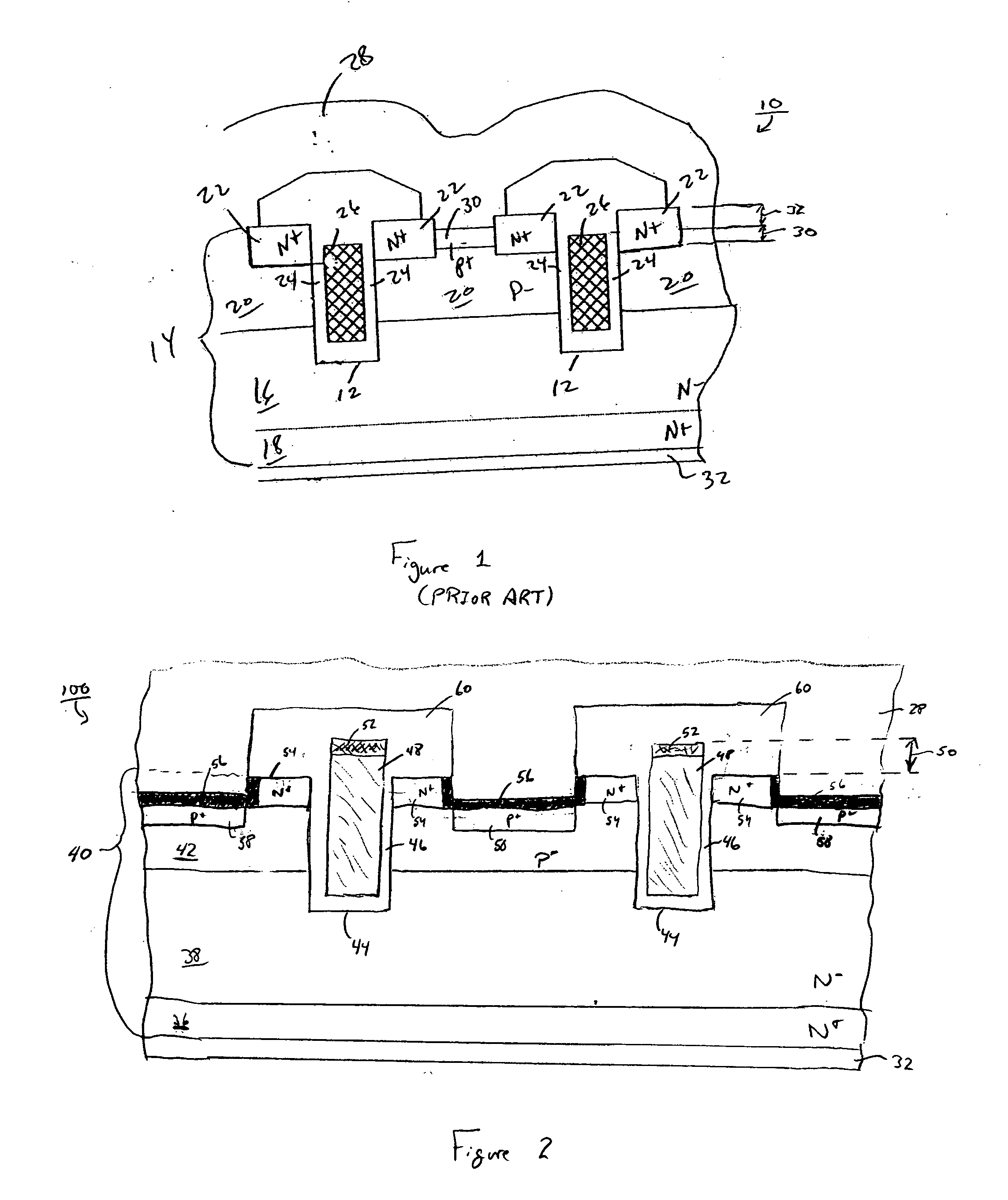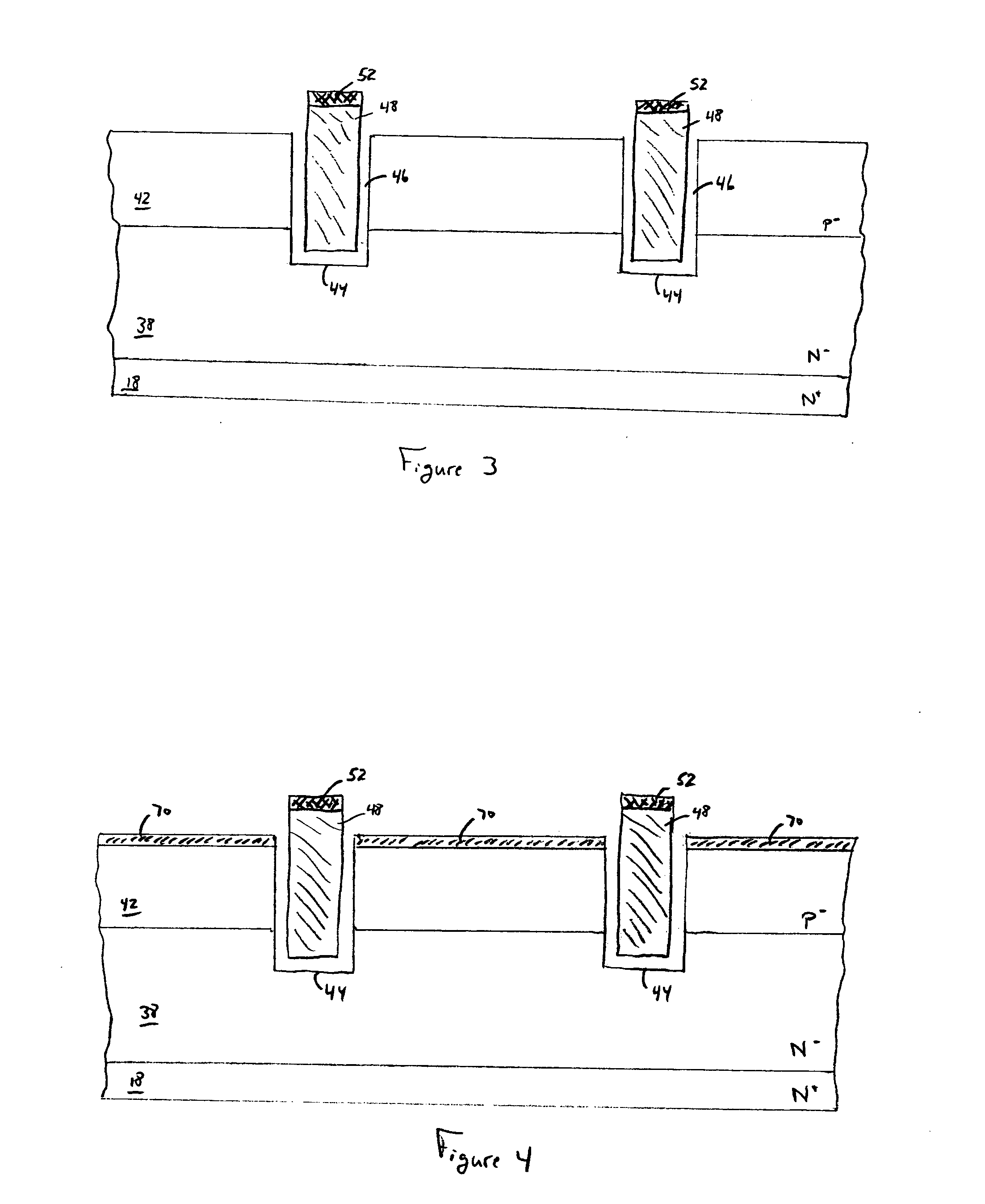Low temperature process and structures for polycide power MOSFET with ultra-shallow source
a polycide power mosfet, low temperature technology, applied in the direction of semiconductor devices, electrical equipment, transistors, etc., can solve the problems of high diffusion temperature and/or process time, increased temperature and process time generally affecting device performance, affecting device performance, etc., to reduce the vertical depth
- Summary
- Abstract
- Description
- Claims
- Application Information
AI Technical Summary
Benefits of technology
Problems solved by technology
Method used
Image
Examples
Embodiment Construction
[0021] Referring to FIG. 2, a section of an example power MOSFET 100 according to an embodiment of the present invention is illustrated. MOSFET 100 comprises a semiconductor body 40, which includes silicon substrate 36 and epitaxial silicon layer 38. Silicon substrate 36 and epitaxial silicon layer 38 have the same conductivity (e.g., N-type), with epitaxial silicon layer 38 including a lower concentration of dopants as compared to substrate 36. Semiconductor body 40 also includes channel region 42, which has conductivity opposite to that of epitaxial silicon layer 38 (e.g. P-type).
[0022] Formed within semiconductor body 40 are a plurality of trenches 44. Each of these trenches is lined with a gate insulation layer 46, formed with silicon dioxide, for example. Within each trench 46 are gate electrodes 48, composed of conductive polysilicon, for example. Significantly and as further discussed below, gate electrodes 48 are “proud”, that is, the gate electrodes extend out of trenches ...
PUM
 Login to View More
Login to View More Abstract
Description
Claims
Application Information
 Login to View More
Login to View More - R&D
- Intellectual Property
- Life Sciences
- Materials
- Tech Scout
- Unparalleled Data Quality
- Higher Quality Content
- 60% Fewer Hallucinations
Browse by: Latest US Patents, China's latest patents, Technical Efficacy Thesaurus, Application Domain, Technology Topic, Popular Technical Reports.
© 2025 PatSnap. All rights reserved.Legal|Privacy policy|Modern Slavery Act Transparency Statement|Sitemap|About US| Contact US: help@patsnap.com



